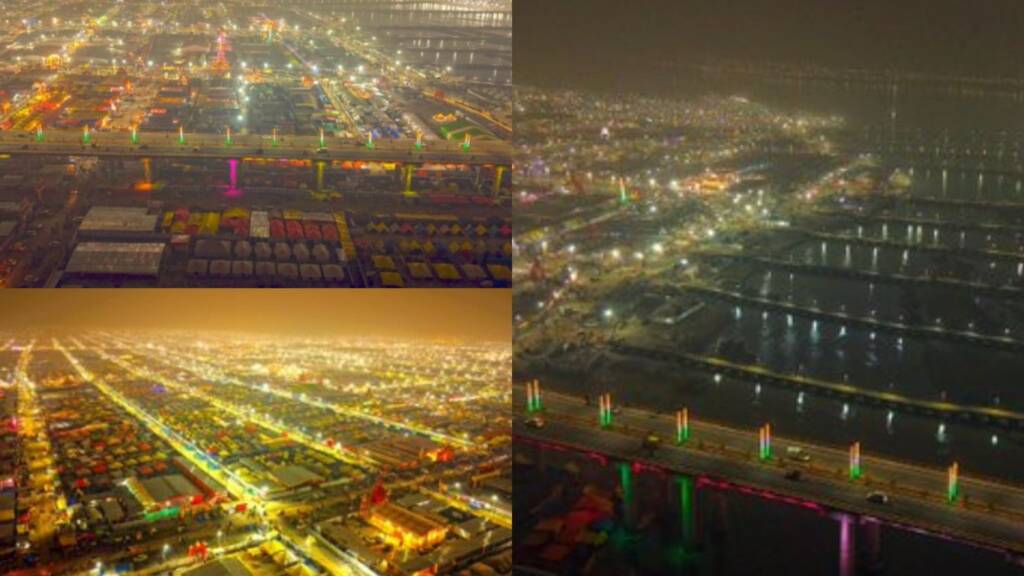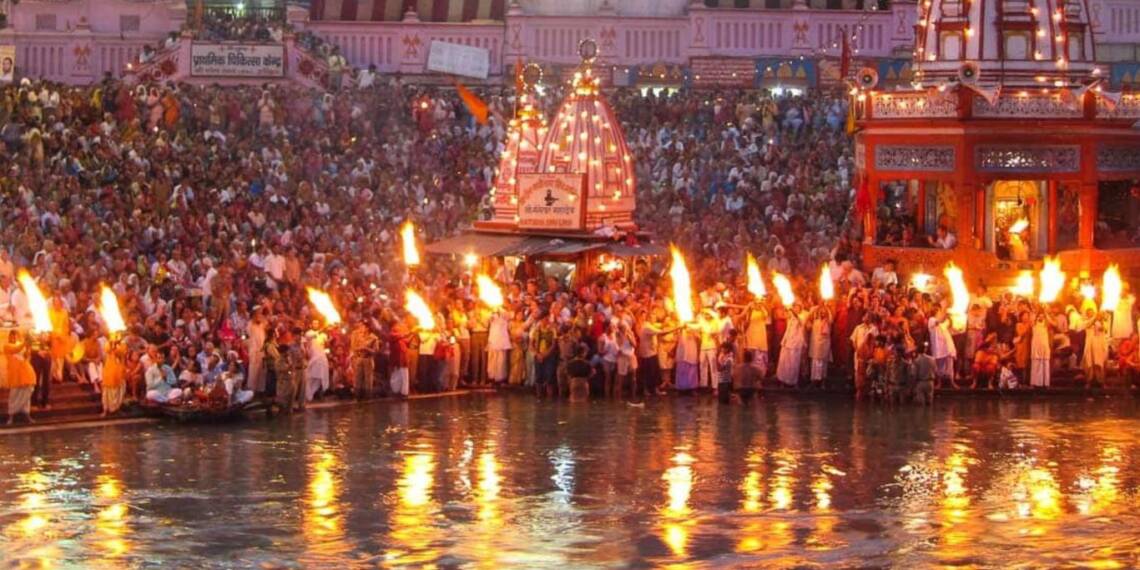The world’s largest religious festival is underway in India’s holy city of Prayagraj. The sheer size of this event is mind-boggling. Over 400 million people are expected to attend this six-week mela or festival from all over the world. Generally, the Maha Kumbh festival is celebrated every 12th year but this one is super special, Maha Kumbh, which is celebrated once every 144 years. It’s like the “super-world-tour” that happens after 12 cycles of the regular Maha Kumbh.
But this festival is not just about religion, it’s also about ancient scientific and astronomical knowledge.
Pilgrims come to purify their souls by bathing in sacred rivers, especially at the point where the Ganga, Yamuna, and the historical Saraswati meet.
Interestingly, the Kumbh Mela has a strong connection to science. The event is carefully timed based on specific planetary alignments, with Jupiter playing a key role. Scientists believe that these alignments affect Earth’s electromagnetic fields, which in turn can influence the human body. Some studies suggest that our bodies respond to these energy changes, which might explain why so many people feel calm and rejuvenated during the festival.
Imagine a family of five. Each member is unique, with their own personality, thoughts, and feelings. But if one person in the family falls sick, everyone feels the impact emotionally. Similarly, if one member is happy, their joy spreads to the rest of the family. Their emotions and energy influence everyone around them.
Now, think of the planets as a similar kind of family. Each planet has its own characteristics, like gravitational pull and energy. But they’re all connected. When something changes with one planet, it can affect the others, as well as all living things on Earth.
Ancient sages noticed this connection between celestial bodies and life on Earth. They focused on three key planets—Jupiter, the Sun, and the Moon—and studied their influence. After deep research, they discovered something special: every 12 years, Jupiter completes one orbit around the Sun, and during this time, Jupiter, the Sun, and the Moon align in a unique way. This alignment creates a powerful energy that supports spiritual growth and raises human awareness.
This rare alignment lasts for about 40 days, creating the perfect conditions for spiritual awakening. It is during this time that the Kumbh Mela is held, offering a chance for people to connect with these cosmic energies and experience personal transformation.
Jupiter was at its brightest on December 7 last year and continues to shine through the ongoing month of January. Along with Jupiter, Venus, Saturn, and Mars can also be seen in the evening sky, creating a spectacular celestial show that adds to the event’s spiritual vibe.
The Sanskrit word kumbh means “pot” or “pitcher.” According to an ancient story, when the gods (Devas) and demons (Asuras) churned the ocean, Dhanvantari emerged holding a pitcher filled with amrita—the nectar of immortality. To prevent the demons from stealing it, Indra’s son, Jayant, took the pot and ran. Along the way, the Sun, the Moon, Jupiter and Saturn helped protect both Jayant and the pot.
As Jayant ran for 12 days, drops of the nectar spilled at four locations: Haridwar, Prayagraj, Ujjain, and Nashik-Trimbakeshwar. Since one day for the gods equals one year for humans, the Kumbh Mela is celebrated at these spots every 12 years. The timing is based on the alignment of the Sun, Moon, and Jupiter.
Prayagraj and Haridwar also host the Ardh-Kumbh (ardh means “half”) every six years. The grand festival after 12 years is called the Poorna Kumbh, or the Maha Kumbh.
The choice of Kumbh Mela’s locations also shows ancient India’s deep understanding of geography and energy fields. These sites, usually at river confluences, are thought to have strong geomagnetic energy, which helps with spiritual growth. Ancient sages picked these spots not just for their natural beauty but for their ability to harness the Earth’s energy.

They studied where on Earth this energy would have the strongest impact. They asked:
1. Which place absorbs the celestial energy most effectively?
2. Where can people achieve the most spiritual progress during the 40 days of this alignment?
Their research led them to Prayagraj, where the Ganga, Yamuna, and the Sarasvati rivers meet at a point called the Triveni Sangam. This sacred confluence was found to hold the most potent energy during the celestial alignment, making it the perfect place for the Maha Kumbh Mela.
But why is the Triveni Sangam in Prayagraj so special? To understand this, we need to look at the unique properties of water. Modern science has shown that water molecules can absorb, store, and retain energy vibrations—and even memory.
The sages applied this knowledge on a grand scale. They established temples at the origins of rivers and set up sacred sites along their paths. Over time, the rivers became powerful repositories of spiritual energy, thanks to the prayers and practices of countless sages and saints along their banks. This energy continues to flow, making these rivers—and their confluences—sacred centers for spiritual growth.
During the Kumbh Mela, millions of people come together to celebrate their faith and explore the connection between the cosmos and human life. It’s more than just a religious festival—it’s a symbol of humanity’s timeless search for peace, unity, and a deeper understanding of the universe.








